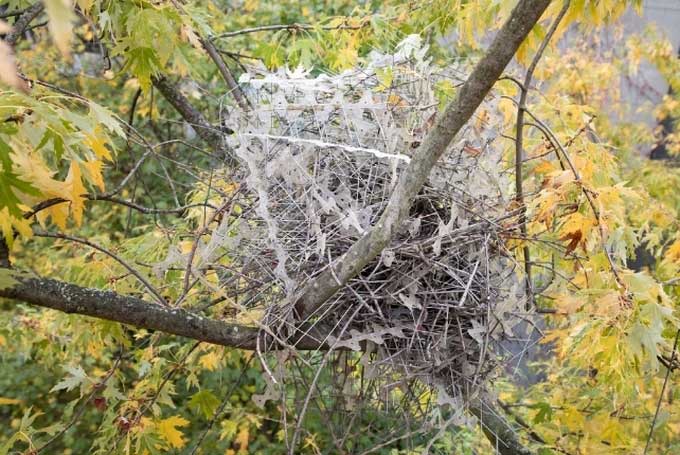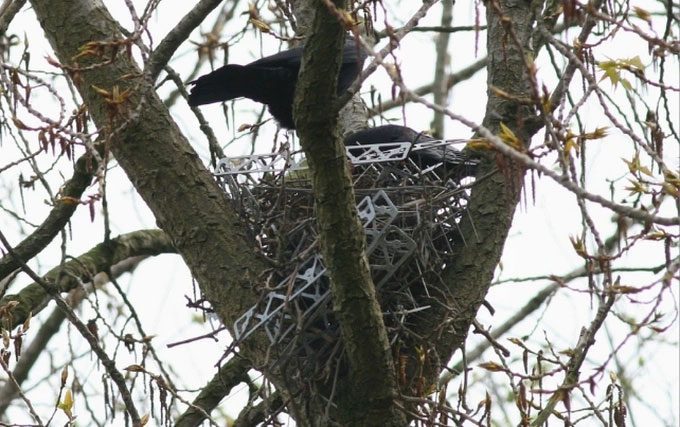The birds discovered have built their nests using a structure made up of various sharp artificial materials to create a solid “defensive layer.”
Bird spikes are devices used in urban households to repel and prevent birds (usually pigeons) from visiting, thereby keeping the entire house safe and clean. However, surprisingly, some bird species primarily living in urban areas have adopted this method to protect their own nests.

The aggressive bird’s nest is built with many bird spikes. (Photo: Hiemstra).
“It’s just like a joke, even as a bird researcher,” said Auke-Florian Hiemstra, a biologist at the Naturalis Biodiversity Center in the Netherlands. “These are the craziest bird nests I have ever seen.”
According to Hiemstra’s description, the birds found have built their nests using a structure made of various sharp artificial materials to create a solid “defensive layer.” These materials include nails, screws, barbed wire, syringes, and of course, bird spikes.
Hiemstra and his team discovered at least two nests of this type in Rotterdam, Netherlands. These included a crow’s nest found with at least 16 bird spikes, and another unfinished nest located on a willow tree.
Previously, an aggressive bird’s nest in Glasgow, Scotland, was also found to have about 12 bird spikes on the outermost layer. Inside were many barbed wires and screws.
Another aggressive bird’s nest made of mixed metal and plastic spikes was also found in Enschede, Netherlands.

A crow’s nest built with bird spikes in the Netherlands. (Photo: Garry Bakker).
The research team believes that the purpose of these birds is to improve the defensive capabilities of their nests against disruptive birds or predators.
In addition to self-defense, the design of bird spikes also helps secure branches and supports the nest’s structure quite well. Some bird species may have recognized this and effectively used them as materials for nest building.
“The creative use of bird spikes for nest building demonstrates flexibility in nesting behavior and material use,” Hiemstra noted.
Meanwhile, evolutionary biologist Zuzanna Jagiello from the University of Warsaw expressed concern that such materials could harm fledglings and even adult birds.
“By using artificial materials to build nests, birds may get caught in wires and harm themselves,” Jagiello remarked. “Moreover, residues from leftover chemicals or microplastics from the materials could increase the risk of chromosomal abnormalities in fledglings.”


















































